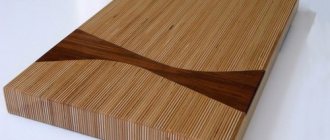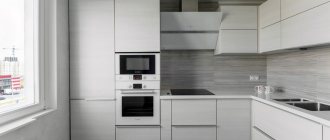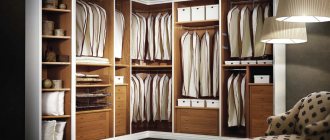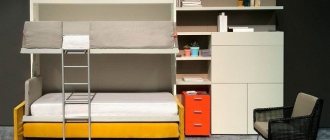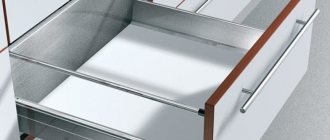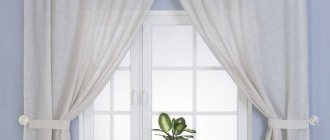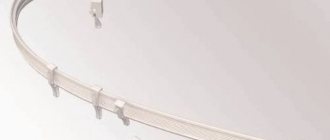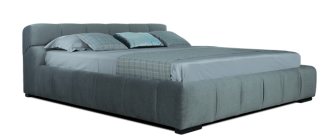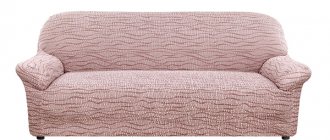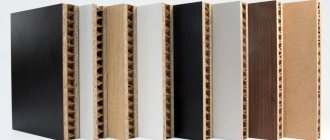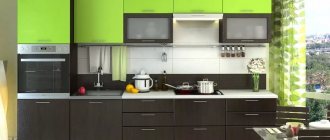Perhaps today you cannot find housewives who do not use cutting boards. These devices are an integral attribute of any kitchen and excellent assistants for cooks.
They do many useful things: chop vegetables and fruits, chop meat, cut cheese and sausages, shred cabbage, chop onions and carrots. First of all, they are a guarantee that a table or other cutting surface that costs a lot of money will remain safe and sound.
Only a high-quality and good cutting board can make cooking easy and fast. Any retail outlet will offer you hundreds of board options to choose from, and it is often quite difficult to make the right choice.
It is necessary, first of all, to pay attention to such characteristics as hygiene, safety, and practicality. The manufacturing material also plays an important role.
Types of cutting boards
Such products are usually divided into two types:
| End | These include boards with a transverse grain arrangement (if we take a knife blade as a basis). The material used is exclusively wood. They have sufficient strength and durability, are not afraid of a knife blade, and the cutting edge wears out very slowly. |
| Lateral | Parallel grain boards. These models are the lightest and most affordable. They serve for a short time. |
Option 3. Plastic board
Plastic boards, in our opinion, are a must have in households. It is best to use them for cutting raw foods: meat, fish, poultry.
Pros: low price, light weight, variety of colors and shapes, moisture resistance, hygiene, dishwasher safe. Plastic does not absorb odors and does not dull knives.
Cons: cannot be placed hot, cannot be used as a serving dish or tray, gets scratched quickly, is not stable when cutting, looks very simple. Thin boards deform over time; it is difficult to find a large plastic board. High-quality and durable plastic boards are expensive.
Selection tips:
- For cutting products that then need to be poured into another container, say, for salad, it is very convenient to use thin boards that fold along the folds.
- The best type of plastic for a cutting board is polypropylene.
- Rough plastic boards do not slip, but are more difficult to clean.
- In hiking conditions, it is very convenient to use silicone mats.
Characteristics of cutting boards
Some housewives naively believe that the best cutting board is made from a single piece of wood. I would like to note that such products are practically not manufactured.
The fact is that solid pieces of wood are not suitable for these purposes. Any wood can crack and warp when dried. And if you still make the board whole, then as soon as you wash it under water, its use in the future will become a pointless exercise due to its warped appearance.
Of course, there are exceptions. For example, mahogany is a mahogany tree that does not lose its properties and parameters when exposed to moisture. But it’s not practical to make boards out of it, except to hang them on the wall for beauty.
Maple and mahogany cutting board
Boards purchased at retail outlets can quickly crack. This suggests that the technological process was disrupted during their manufacture. Almost all cutting boards come in the form of thin strips of wood called strips. The thinner the strip, the better the quality of the product.
If the production technology is followed, the glued boards will have sufficient strength and integrity, despite the many components.
Option 2. Bamboo board
Bamboo boards are almost as good as wood boards, and in some ways even better.
Pros: Bamboo boards are environmentally friendly and durable, they are lighter, stronger and more moisture resistant than wooden boards, and are less likely to scratch. In addition, they require almost no oiling.
Cons: Bamboo boards are almost 20% harder than wood boards, and therefore dull knives faster. Many people don’t like bamboo boards simply because of the tactile feel.
Selection advice:
- Bamboo boards can be very good, but only if they are done well. Often, due to poor glue, boards break into pieces and even become covered with mold. Another possible problem is the appearance of burrs on the board.
Sizes and shapes of cutting boards
Wooden cutting boards are divided into certain types, which vary in size and appearance. The boards may be small. These are convenient for cutting bread and small vegetables. Large devices are classified as professional and are used for cutting meat carcasses.
The most convenient dimensions are considered to be 40cm x 30cm or 35cm x 25cm. Such boards are considered classic. But non-standard options also go on sale. They also come in a variety of shapes.
The most common ones include round, rectangular, oval and square samples. But now you can also find intricate figures that look like animals, reminiscent of vegetables and fruits, flowers and mushrooms.
But the main property of a cutting board should not be its appearance, but its ease of use. Beauty and amazing design should take a back seat. There are examples with drawings, burning and decoupage. This will please the eye, but will not affect its functionality in any way.
Does size matter?
Why is board size important? It affects the quality, convenience and cutting time. When something falls off the cutting board, you need to take the time to pick it up. Plus, it should completely fit the largest object being cut or carved, such as a turkey. From this point of view, boards that fold out into smaller elements are convenient.
Let's look at what cutting boards are made of these days.
Board materials
There are three main types of material from which cutting boards are currently made. Let's consider each of them from the point of view of advantages and disadvantages.
| Material name | Advantages | Flaws |
| Plastic boards | Light weight, affordable price, variety of sizes and types. Moisture-repellent, easy to clean and wash, including using a dishwasher. It is possible to use detergents. They are not afraid of knife cuts. | When using a knife, scratches remain. Cuts can trap dirt and oil, allowing bacteria to form. They cannot be completely disinfected, so if damaged, you should replace them with a new one. |
| Wooden boards | They have antiseptic qualities. After washing and thorough drying, the bacteria die. Wood belongs to the category of soft and pliable materials, so it recovers quickly. The knife leaves virtually no scratches. | Cannot constantly be in contact with water. It is necessary to regularly carry out preventive maintenance by thoroughly cleaning the surface and lubricating it with oil. This will help avoid excessive absorption of moisture, and, as a result, the appearance of cracks and deformation. |
| Bamboo boards | There is no stronger grass in the world than bamboo. It is an environmentally friendly product as it grows without the addition of harmful chemicals and fertilizers. Quite a practical thing, a great helper in the kitchen. Food odors are not absorbed, deformation does not occur, and it is not afraid of water or sudden temperature changes. Cracks and scratches practically do not form. | Excessive strength leads to rapid dulling of knives. The boards are made of thin bamboo strips connected to each other with a special glue, which may contain formaldehyde harmful to human health. |
To learn about which board and what material to choose from, watch this useful video:
What wood is used to make kitchen boards?
Wood has always been considered the best natural material for making kitchen utensils. First of all, this is due to the fact that wooden products have a special living warmth and remind people of their connection with nature. The environmentally friendly material does not emit any harmful substances, which is important for cooking.
In addition, some breeds have antibacterial properties, which prevents the accumulation and proliferation of food bacteria.
There are many different varieties of trees on the planet, each with their own special characteristics. Each type, due to its unique properties, has found its application in industry: for example, pine is most often used for construction work, expensive furniture is made from apple, oak, pear or cherry trees. Different types of trees are used to make kitchen boards; almost all parameters of the product depend on the variety.
Pine
Pine is the cheapest production material. However, this is not the best option for a cutting board. Firstly, it is impregnated with resin, which is why a characteristic odor may arise when heated; secondly, when in contact with moisture, this material quickly loses its characteristics; thirdly, knife marks will remain on the rather soft structure of the wood. Such a product will not last long; it will quickly begin to crack and warp.
Pine cutting board.
Beech
This tree is native to North America, Europe and Asia. It has excellent hardness and strength. A characteristic feature of the material is its reddish tint and beautiful natural pattern. The main disadvantage of this species is its hygroscopicity, that is, a beech board, like a linden board, absorbs moisture well. To extend its service life, the surface of this wood is impregnated with varnish, which is not very good for working in the kitchen. But if you use it for cutting exclusively dry products, such as bread, then it can last for quite a long time.
Beech cutting board.
Oak
Sometimes oak is called the king of trees for its excellent properties. It is remembered in many legends, attributing amazing strength to it. In the vastness of Russia, the most common species is pedunculate oak. This is a tall tree with strongly branching lush branches and a powerful trunk.
Products made from it are of excellent quality; it is probably the best material for a cutting board. It is practically not subject to rotting and has amazing antibacterial properties. The wood has a golden-brown hue and texture that cannot be confused with anything else. The boards are dense, although somewhat heavy, which guarantees a long service life and resistance to wear. Oak grows for a very long time, there are trees that are more than 1000 years old, it is quite difficult to process - all this affects the price. But it’s worth it: such products are not afraid of moisture. Professional chefs prefer this material.
Oak board.
Nut
In terms of hardness and many characteristics, this tree is similar to oak. It is easy to process and has a smooth, coarse texture and luxurious color. Kitchen boards made of walnut are not afraid of moisture and are highly wear-resistant.
Cutting board made of walnut.
Somewhat cheaper than oak, if funds do not allow you to purchase “royal” wood, then this will be the best choice.
Ash
It has a beautiful silky structure that is somewhat reminiscent of oak. In terms of density and hardness, this wood surpasses even oak. This cutting board is practical, resists moisture well, has a very long service life, but knives quickly become dull on it.
White ash cutting board.
Other breeds
In addition to the above most common types of wood in the production of cutting boards, less popular species are also used, including:
- Birch is already a commercial wood, it belongs to the species of medium hardness, it is well processed, but the birch board quickly turns black, in addition, it will warp from dampness. Widely distributed in the Northern Hemisphere, in Russia. Most often used for the production of plywood. A birch cutting board will cost very little. But the quality will be appropriate.
- Hornbeam is a breed widely distributed in Asia and the North Caucasus. The texture is poorly expressed, the color is grayish. Hornbeam produces lightweight boards with sufficient hardness and strength that perform well in everyday work.
- Acacia is a very good dense and hard tree with a reddish tint. Grows mainly in Australia, Africa, Mexico and Asia. It makes excellent kitchen boards that serve their owners for many years.
- Small-leaved elm - common in Asia. It has a pronounced textured pattern with a dark core and chocolate shades along the edges. Durability is on par with oak. Cutting boards made of this material are functional and look expensive.
- Hevea is a fast-growing rubber tree native to the tropical forests of North America, used for making rubber. The structure density is very low. When heated, like pine, resins can be released.
- Maple is most common in the European part of Russia. It has a beautiful whitish color with a clearly visible pattern. Maple, like aspen, is widely used in carpentry, but due to its high hardness it is not the best material for the production of kitchen boards.
Caring for Wooden Cutting Boards
In order for a cutting board to serve for a long time, it is necessary to provide it with some care. As soon as the product is purchased, it is worth wiping it with mineral or linseed oil. It is advisable to carry out this procedure several times to obtain a high-quality protective layer.
After each cooking, the board must be washed. This will give you the opportunity to get rid of unpleasant odors. This procedure is done using vinegar, lemon juice or plain running water. It is advisable not to use detergents so that they do not subsequently enter the human body.
It is advisable to store the boards in an open place and not put them in boxes. The air must constantly circulate to prevent mold and unpleasant odors. It is advisable to purchase several cutting boards for different groups of products: fish, meat, fruit, baked goods.
There is safety in numbers
One more point: it is believed that you cannot use one board for cutting all types of products. This is unhygienic, even if it has an antibacterial coating.
First of all, it's difficult to test because you won't see any dead germs. And secondly, even simply rinsing the board after cutting each type of product will take time and complicate the cooking process. It turns out that this is also impractical.
The ideal number would be 4 cutting boards:
- for raw meat;
- for fish;
- for bread;
- for vegetables, fruits and cooked foods.
The reasons are quite reasonable. Before heat treatment, meat and fish may contain pathogenic microorganisms that should not be used on salads. The specific smell of seafood can easily end up in another dish. And there is no need to wash a separate board for bread.
If you don’t eat meat, congratulations, the required minimum is reduced to three, but there may be more. And here's a little spoiler tip - they don't have to be made of the same materials.
Plastic: know-how in the kitchen
Lightweight and colorful plastic appeared in the kitchen not so long ago, although the material itself was obtained in the middle of the 20th century. Models vary in color, size, thickness, shape.
For raw materials, plastics of different quality and type can be taken, so when purchasing, pay attention to this characteristic:
- cheap plastics;
- polyethylene;
- polypropylene.
Polyethylene and polypropylene are safe for health, more durable, and resistant to deformation.
On sale you can see models made of flexible plastic, with folding fragments, with or without handles. Cutting surfaces with special grooves for draining liquid or juice, a grooved side, and markings are easy to use.
Many manufacturers coat their products with special antibacterial coatings. This not only improves hygiene and minimizes the risk of infections, but also increases service life.
"Pros" of plastic
Those who prefer this material note its advantages:
- light weight;
- originality of design,
- various colors;
- resistance to deformation;
- easy to clean (can be put in the dishwasher);
- Compared to a ceramic or glass board, this material does not dull knives;
- acceptable prices.
Plastic models do not absorb moisture or odors. In stores it is easy to find products of any size, color, cost. Therefore, everyone can buy several boards for cutting food, and, if necessary, quickly replace them.
Disadvantages of plastic
One of the most important disadvantages of the material is its rapid failure and the appearance of scratches on the surface. The front side looks untidy; in addition, fungi and bacteria accumulate inside the cracks.
- sliding when working on the table surface (for stability, products are often produced with a corrugated back side or equipped with rubber buttons);
- cannot be used as a stand for hot dishes.
Professionals use special grades of expensive polypropylene boards for cutting food. But even in restaurants, plastic products are usually used for cutting vegetables, fruits, cheeses, and sausages, but not for meat or fish.
Inexpensive plastic is unsafe to use. When cutting food, such materials crumble, pieces of plastic can get into the food and then into the human body.
How to choose
When choosing a cutting board, consider several important aspects.
- Type of wood. The best option would be oak or acacia.
- Dimensions. This criterion takes into account the purpose for which the board is purchased. For cutting meat, you should choose large products, and for cutting vegetables or fruits, small ones are also suitable.
- Design. For some, this is a fundamental point, since the boards must fit harmoniously into the interior of the kitchen. The market offers a huge range of simple, smooth products, with original images, decoupage or cutting.
Functional boards with additional features
Progress has affected even this simple accessory. Today you can buy a cutting board with enhanced functionality and an antibacterial coating, for example, containing silver particles.
Bread board with bread bin
In our review of bread bins, we already touched on boards with lids designed for storing and slicing bread. This option is convenient because you will never confuse a board for foods that require heat treatment with a bread board.
The same line has special offers for pies and pizza. They are convenient for serving and storing.
Devices for cutting baguette
How much such accessories are needed in the kitchen is up to you to decide. In any case, they look original and help cut a long loaf into neat slices of equal thickness. It is especially convenient to cut fresh bread with a crispy crust. For work it is better to use a knife-saw.
Cheese cutting board
There are several types of special boards for cutting cheese:
- With a set of knives for different types of cheese. In compact models, knives are stored in compartments on the reverse side. There are more massive options that have stands or drawers for knives.
- Cutting cheese boards with a fishing line or a built-in knife , designed for cutting hard cheeses into thin slices.
- Small boards with glass lids similar to bread bins. They maintain an ideal microclimate for storage.
Special cheese boards are always made only from natural wood or mold-resistant bamboo. They need to be washed and disinfected periodically.
Multi-tasking sink attachment
There are different board options for washing. The most compact ones in this line are semicircular and are installed on the sink. Another option is slicing surfaces with a colander.
Bulky models should be chosen only if you have a spacious kitchen and need to process a large amount of vegetables. The colander is located directly above the sink, so you can safely open the water to wash vegetables for chopping and rinse the knife. This model is also convenient for peeling vegetables.
There are wooden, plastic and glass products on sale. Considering the proximity of water, it is better to give preference to lightweight and practical plastic.
Board with food container
This is already a whole box, in the top lid of which there is a cutting surface and a hole. During the slicing process, food is swept into a hole, from where it ends up in a drawer. Convenient for salads, stews and other dishes that require a large variety of ingredients.
The line has different design options. Most often, developers play with the shape, number of drawers, and how to access them.
This row also includes bread boards with compartments for crumbs. It’s very convenient, since you don’t have to collect the crumbs on the table, but you can pour them out to the birds.
Combination with scales for maximum accuracy
By combining two important devices, kitchen accessories designers have created a smart device. This model is needed by housewives who like to cook exactly according to recipes. It is not difficult to weigh the chopped products and immediately add the missing piece.
Beeswax
A complex organic compound secreted by special glands of honey bees. It is a stable multicomponent substance from white to yellow-brown color. At a temperature of 35°C it becomes plastic, at a temperature of 62°-68°C it melts. When cutting boards are treated with wax, the pores of the wood are clogged, which increases the board's resistance to moisture and dirt. And the high bactericidal properties of wax significantly increase the hygiene of cutting boards treated with it.
Glass and ceramic accessories
Cutting boards made of glass or glass ceramics look very beautiful, but are more fragile. It is advisable to use them for processing juicy or wet products, since they are easy to clean, are absolutely not afraid of water, and are perfectly disinfected. When purchasing such boards, make sure that the working side is without a pattern - paint particles should not get on the food.
Glass and ceramic surfaces are suitable for processing any product, but you should not chop or use a hammer on them. But such boards are perfect for slicing, for example, herring, vegetables, sausages and herbs. When you wash such a board, try not to alternately use boiling and ice water - the temperature contrast is undesirable for such materials.
Glass ceramic boards are somewhat stronger than glass boards, but they are also quite fragile and do not like rapid temperature changes. When working with such boards, keep in mind that knives can become dull on them. To prevent the glass plate from sliding on the table during operation, its reverse side is often equipped with rubber feet. You can serve pies, cakes or pizzas on glass boards with an impressive design. Models made of heat-resistant glass are also suitable as coasters for hot dishes.
A couple more general tips for choosing
- The board should have two working sides. Avoid boards with legs, which result in only one side being workable.
- Select the correct size of the main board. Professional chefs recommend choosing cutting boards measuring 38x50 cm. This is enough for safe and efficient processing of food.
Support the project - share the material with your friends on social networks:
Difficulties in choosing: plastic or wood
Having understood the features of boards made of plastic and wood, it is not so difficult to draw conclusions about your choice. Both options are suitable for use. Each has advantages and disadvantages.
New wooden or plastic products have high levels of hygiene and durability. The situation changes when deformations and cracks appear. Plastic boards with scratches cannot be used; they require replacement. Wooden models must be carefully processed and dried after each cutting of food.
Wooden boards made of oak, beech, and hevea last longer, and plastic boards made of polypropylene. Cheap models made of wood or plastic quickly lose their attractiveness and become deformed.
Everyone chooses a board based on personal preferences, their own culinary abilities, and budget capabilities. Safety and terms of use depend on care and proper use.
By the way, find out how you can quickly sharpen a ceramic knife.
Important Preface
All kitchen boards differ in several ways:
- material,
- manufacturing method,
- size,
- form,
- design.
We will then choose the ideal option solely based on the first two criteria, since size and shape are usually chosen based on habit, and design is generally a matter of taste, and in this matter you can rely solely on yourself. But the material and technology used in the production of a particular product are more complex issues and do not depend on personal preferences. That is why they should be given special attention.
